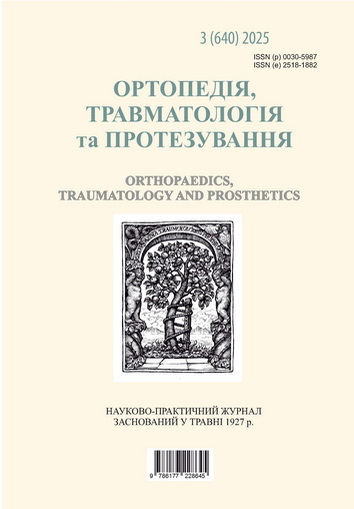NONSTEROIDAL ANTI-INFLAMMATORY DRUGS IN THE MANAGEMENT OF DEGENERATIVE SPINAL DISORDERS: EFFICACY, SAFETY, AND FUTURE PERSPECTIVES
DOI:
https://doi.org/10.15674/0030-598720253103-110Keywords:
Degenerative spinal diseases, inflammation, nonsteroidal anti-inflammatory drugAbstract
Objective. To analyze the current literature on the pathogenetically justified use of nonsteroidal anti-inflammatory drugs (NSAIDs) in patients with degenerative spinal diseases, considering the growing use of this drug class in recent years during the perioperative period of spinal surgery as well as in conservative treatment, and to identify potential risks and prospects for optimizing therapy. Methods. A literature review was conducted using electronic databases such as PubMed, covering the past 10 years. Results. Relevant studies were selected that highlight the pathogenesis of degenerative spinal disorders (DSD), the role of inflammatory mediators, the mechanisms of NSAID action, and their impact on pain and inflammation. The key role of inflammatory processes in intervertebral disc degeneration was emphasized, with increased expression of cytokines IL-1β, TNF-α, and IL-6. This cascade promotes extracellular matrix degradation, triggers neurovascular ingrowth, and enhances nociceptive sensitization. Comparative clinical trials demonstrate that NSAIDs with varying degrees of cyclooxygenase isoform selectivity reduce pain scores and improve functional outcomes, though they differ in tolerability profiles. For chronic use, special attention is required regarding gastrointestinal and cardiovascular risk assessment, minimal effective dosing, and the use of protective co-medications. Conclusion. Accumulating experimental evidence suggests that NSAIDs should be regarded not only as symptomatic analgesics but also as potential modulators of the inflammatory microenvironment of the intervertebral disc. This opens perspectives for their combination with biological agents or antioxidants to slow down the degenerative process. Future research should focus on developing personalized treatment protocols integrating pharmacological, physical, and rehabilitative interventions with consideration of inflammatory biomarkers.
Downloads
How to Cite
Issue
Section
License
Copyright (c) 2025 Iryna Korzh, Inga Fedotova, Kateryna Fedik

This work is licensed under a Creative Commons Attribution 4.0 International License.
The authors retain the right of authorship of their manuscript and pass the journal the right of the first publication of this article, which automatically become available from the date of publication under the terms of Creative Commons Attribution License, which allows others to freely distribute the published manuscript with mandatory linking to authors of the original research and the first publication of this one in this journal.
Authors have the right to enter into a separate supplemental agreement on the additional non-exclusive distribution of manuscript in the form in which it was published by the journal (i.e. to put work in electronic storage of an institution or publish as a part of the book) while maintaining the reference to the first publication of the manuscript in this journal.
The editorial policy of the journal allows authors and encourages manuscript accommodation online (i.e. in storage of an institution or on the personal websites) as before submission of the manuscript to the editorial office, and during its editorial processing because it contributes to productive scientific discussion and positively affects the efficiency and dynamics of the published manuscript citation (see The Effect of Open Access).














